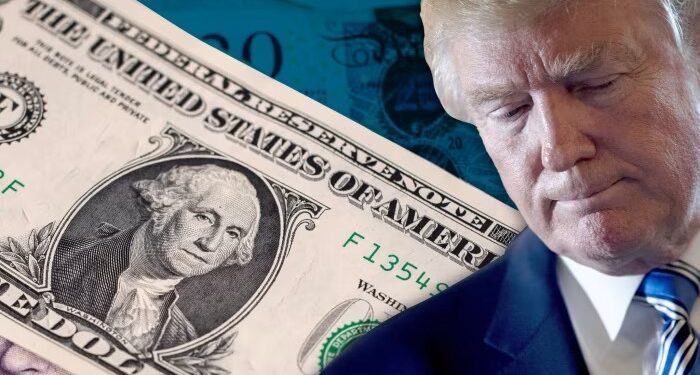The U.S. dollar has entered a sharp decline, falling to multi-month lows against major global currencies. Driven by persistent inflation, mounting fiscal deficits, and growing geopolitical uncertainty, the weakening greenback is beginning to weigh heavily on both the American economy and public confidence in President Trump’s leadership.
A sliding dollar and rising economic risk
The dollar’s downturn is partly rooted in investor concerns over unsustainable fiscal policies. Since the start of Trump’s second term, federal spending has accelerated—driven by large infrastructure programmes, renewed industrial subsidies, and expanding entitlement commitments. With tax revenues lagging, the national debt has surged to historic levels, prompting alarm in credit markets.
Despite efforts by the Federal Reserve to control inflation through rate hikes, consumer prices remain high, and monetary policy appears increasingly disconnected from the White House’s broader economic approach. A weaker dollar is pushing up the cost of imports, further straining household budgets already under pressure from expensive housing, food, and fuel.
Capital flight and declining confidence
International investors are beginning to reduce exposure to dollar-denominated assets, shifting instead towards gold, commodities, and other major currencies such as the euro and the yuan. Foreign demand for U.S. government bonds—long considered a cornerstone of global financial security—is showing signs of weakening, raising the risk of higher borrowing costs.
While a depreciating dollar can support American exports in the short term, it also threatens to erode long-term confidence in U.S. financial leadership if not matched by credible and disciplined policymaking.
Political consequences for the Trump administration
The dollar’s decline is now becoming a broader political issue. Critics argue that President Trump’s unpredictable trade policies and antagonism towards global institutions have deepened investor uncertainty. Friction between the White House and the Federal Reserve has further fuelled perceptions of policy incoherence.
Recent polling indicates a fall in public confidence in the administration’s economic management, particularly among independent voters. For a president who has tied his legacy to market gains and economic growth, a currency crisis could prove politically damaging.
A test of leadership
The dollar’s fall is more than a market reaction—it is a signal of deeper unease about the direction of U.S. policy. Without a coherent fiscal plan and a shift in tone from the Trump administration, the American economy risks entering a period of heightened instability.
As markets respond and the dollar continues to slide, pressure is mounting on the White House to reassert control and restore faith in U.S. economic leadership.
U.S. Dollar Snapshot – May 2025
Dollar Index (DXY) Performance:
- Current Level (as of 2 May 2025): 100.04
- Year-to-Date Change: −8.6%
- Recent Trend: The DXY has declined nearly 10% during President Trump’s first 100 days of his second term, marking the steepest drop for a new administration this century.
Key Exchange Rates (as of 3 May 2025):
- EUR/USD: 0.8849
- GBP/USD: 0.7534
- USD/JPY: 144.94
- USD/CNY: 7.2711
- USD/CAD: 1.3817
- USD/CHF: 0.8268
- USD/SEK: 9.6739
Market Context:
The dollar’s depreciation is attributed to factors such as aggressive trade policies, rising tariffs, and increased government debt, which have significantly reduced demand for the currency.
Despite concerns, some analysts argue that the recent decline in the dollar is more reflective of market volatility and investor repositioning than a true crisis.
For a comprehensive view of the dollar’s performance, you can explore the interactive DXY chart on MarketWatch: MarketWatch
newshub finance



Recent Comments